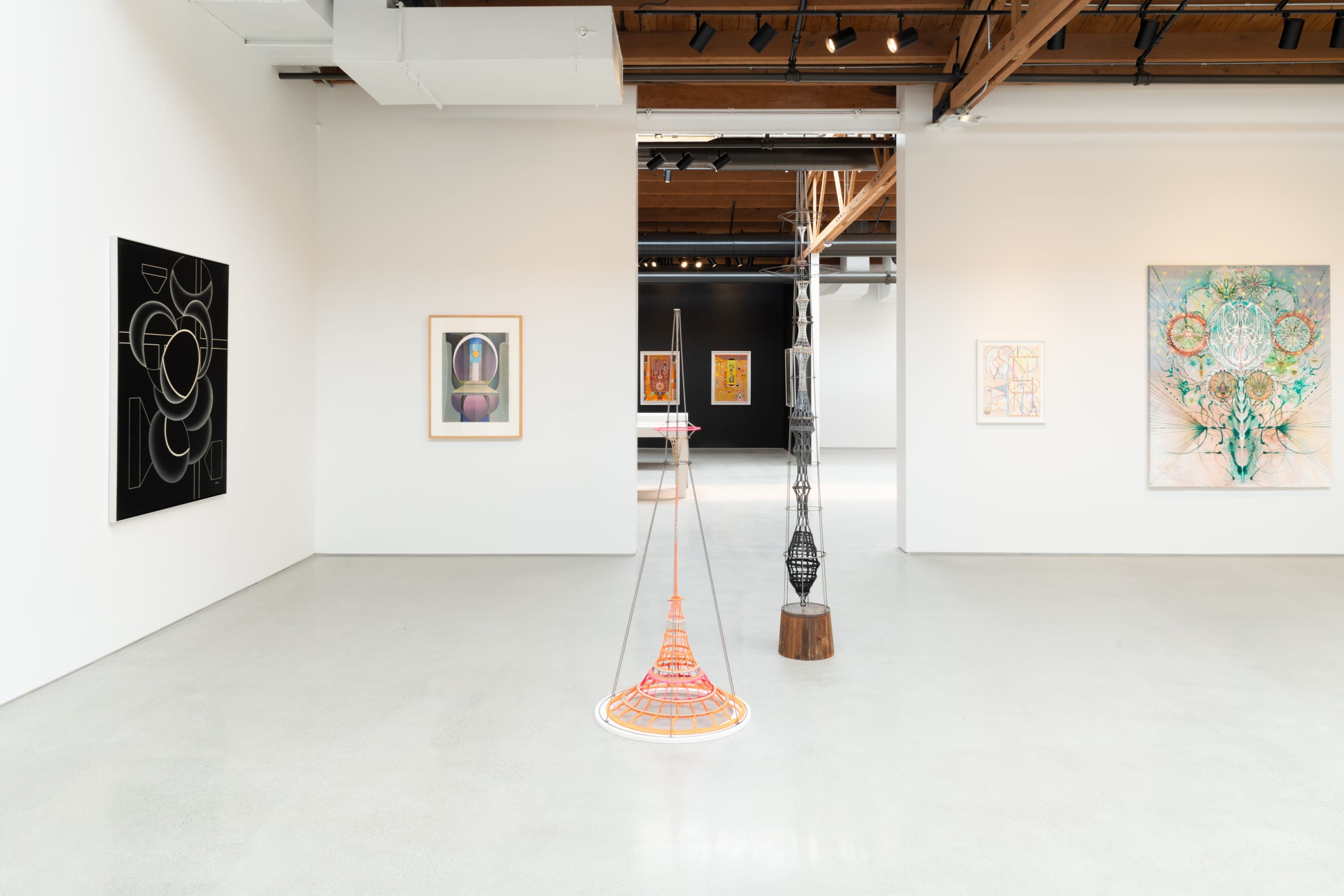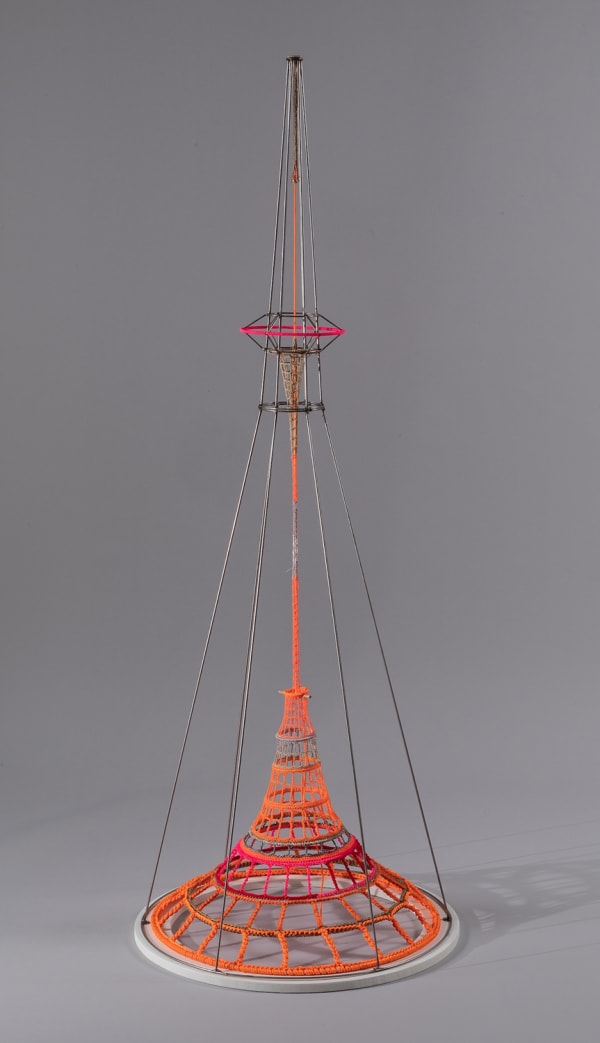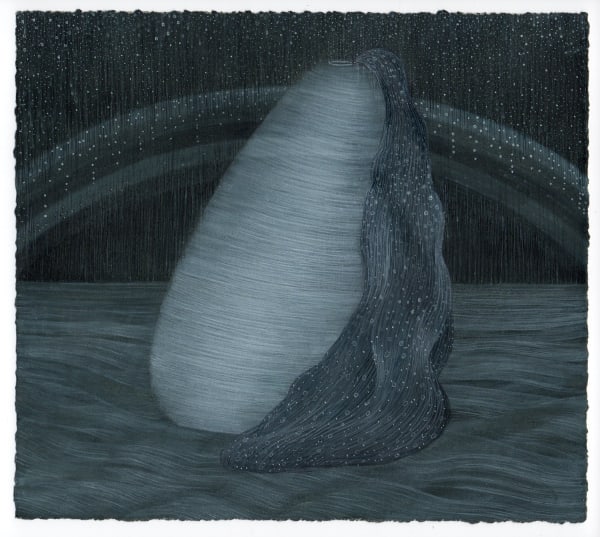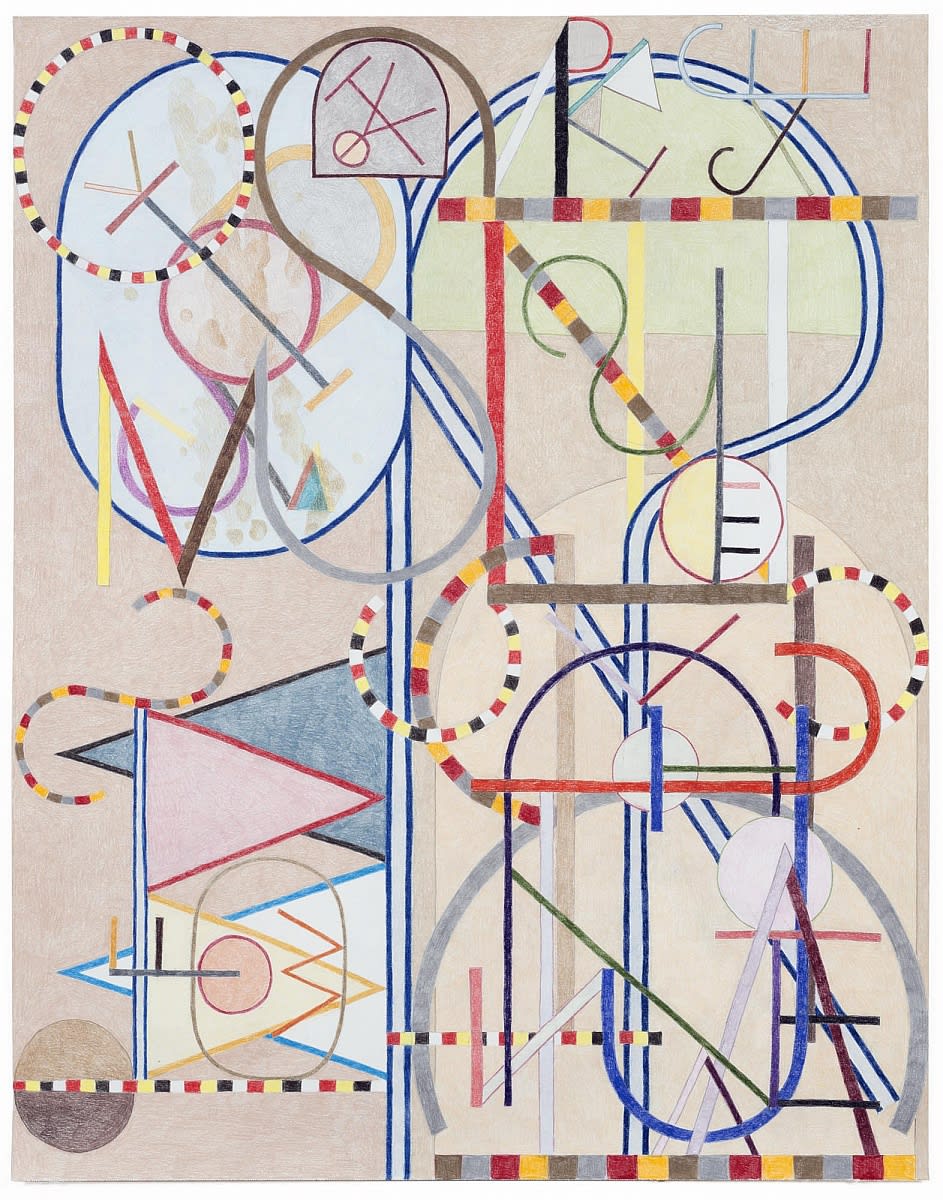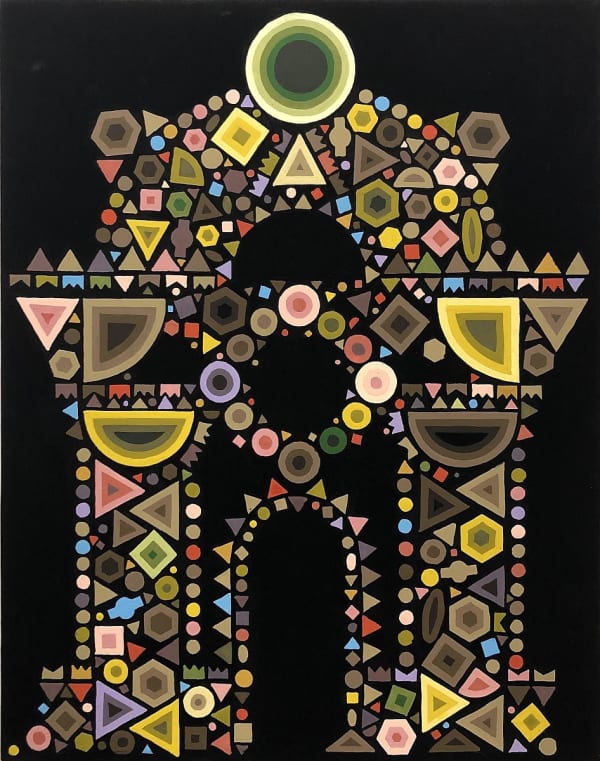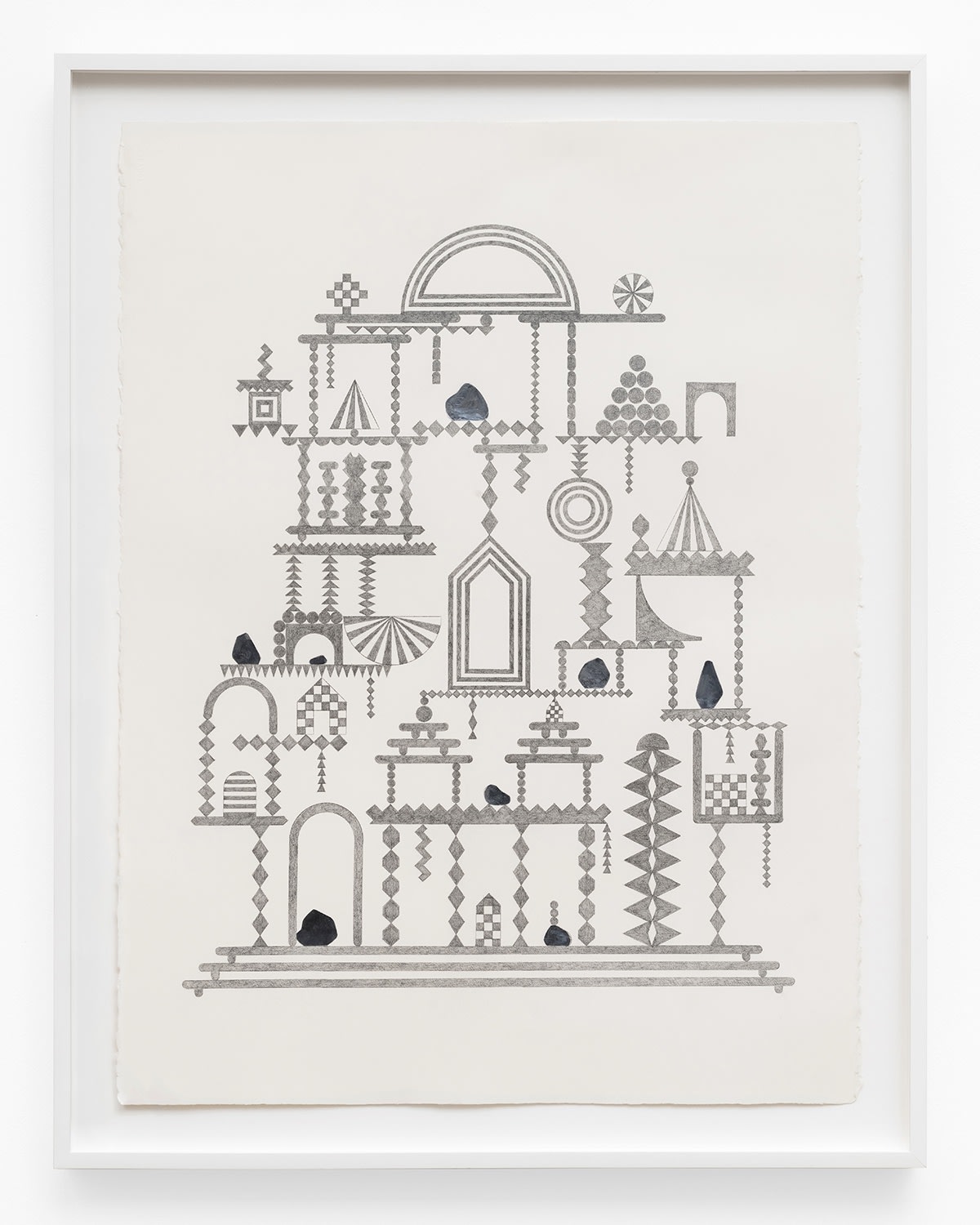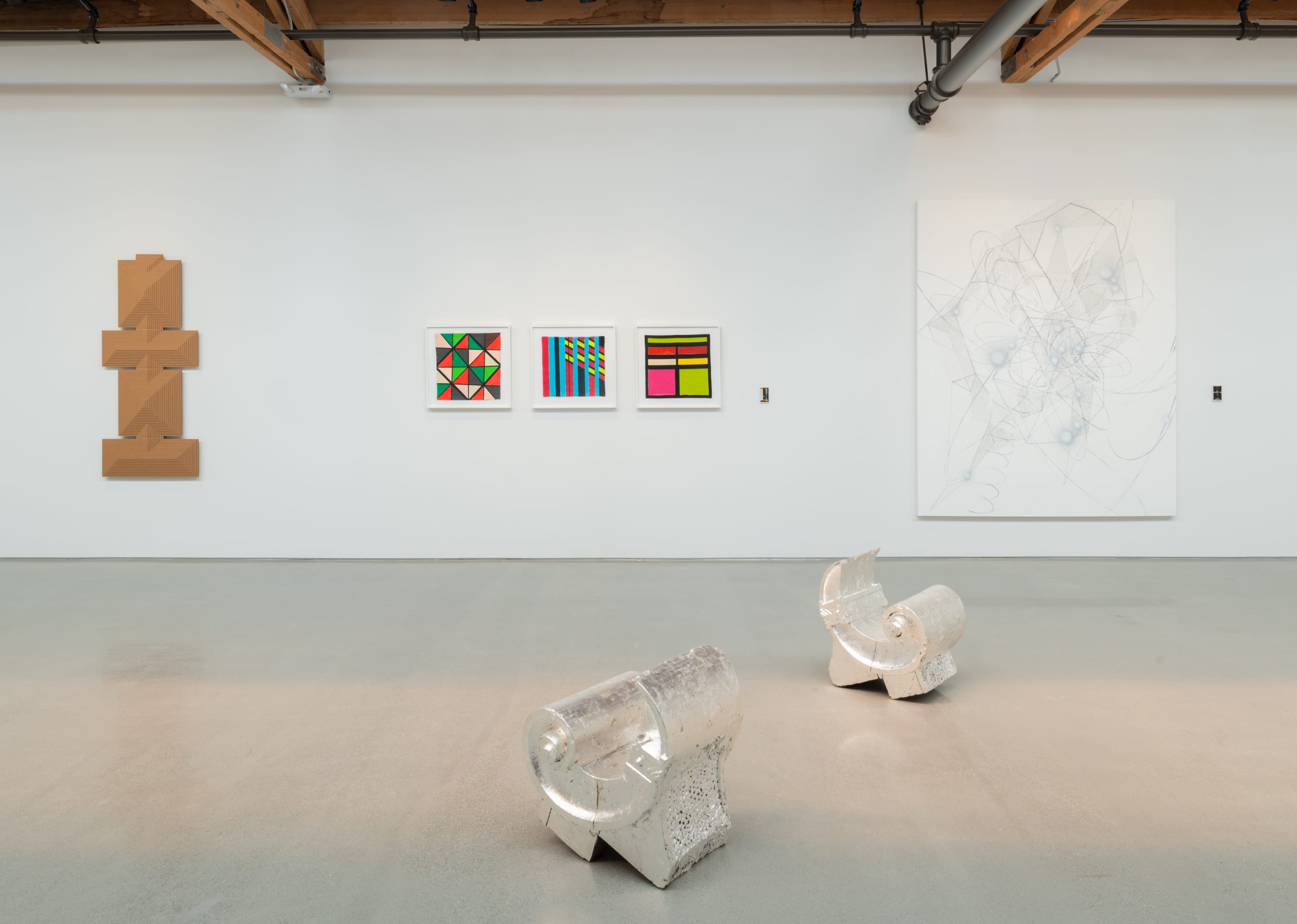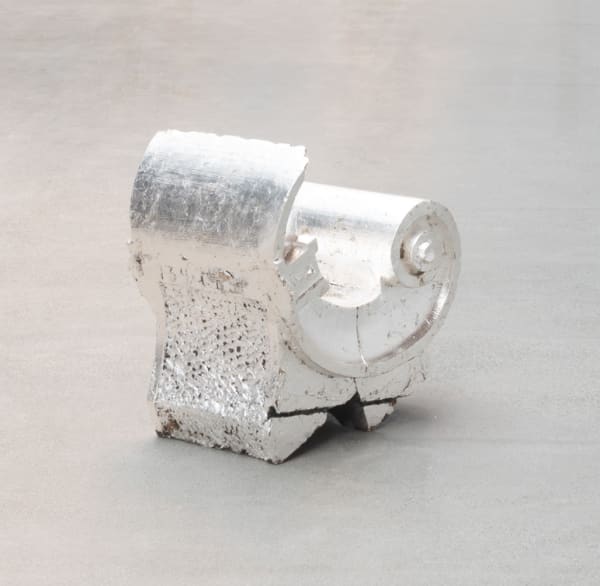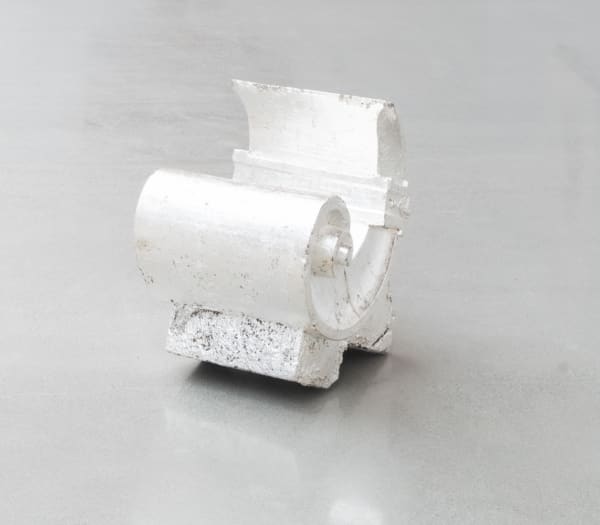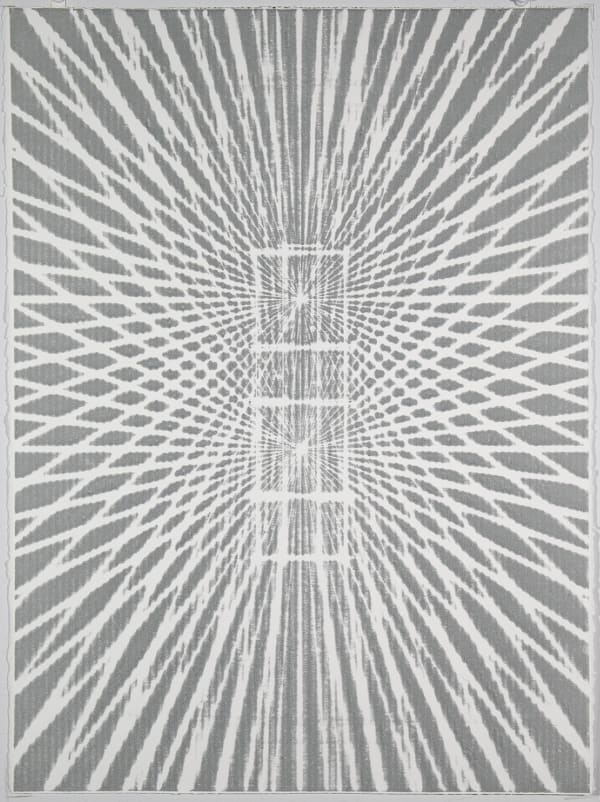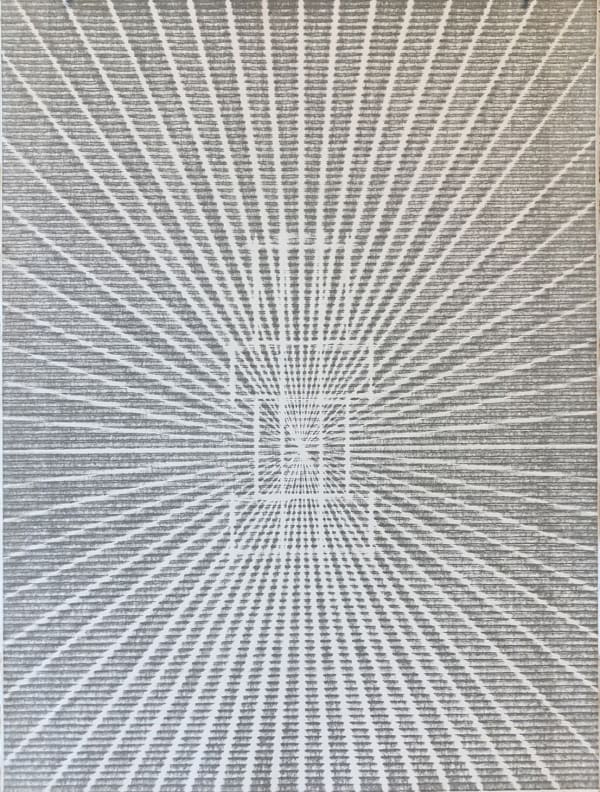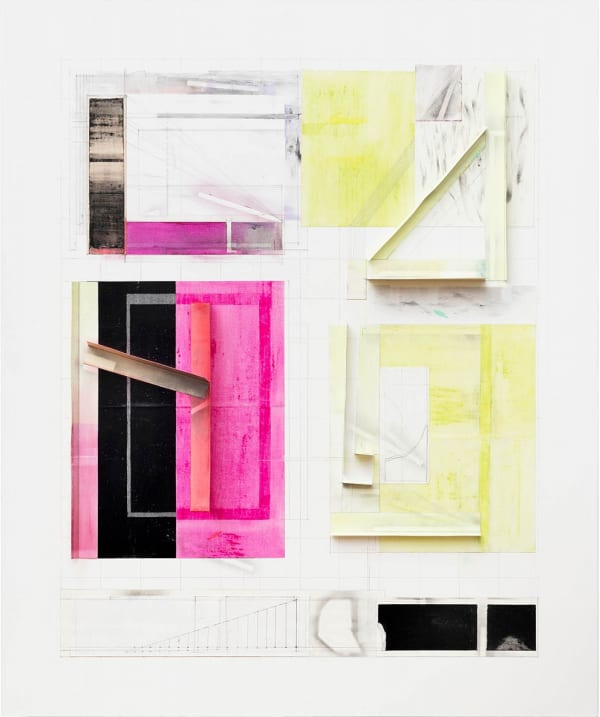COSMIC GEOMETRIES: Survey Exhibition
-
Curated by Hilma's Ghost
Featuring Candida Alvarez Elijah Burgher, Holly Cahill, Mike Cloud, Gianna Commito, Edie Fake, Vanessa Filley, Julia Fish, Beverly Fishman, Diana Guerrero-Macia, Azadeh Gholizadeh, Michelle Grabner, Christina Haglid, Rachel Hayes, Gina Hunt, Michiko Itatani, Miyoko Ito, Anna Kunz, Alice Lauffer, Aya Nakamura, Deb Sokolow, May Tveit, Georgina Valverde, Susan C. White, Amy Yoes, Jade Yumang
Cosmic Geometries: The Prairie's Edge is a group exhibition of intergenerational and intersectional artists either based in the Midwest and adjacent to it, that examines the spiritual and aesthetic functions of abstract painting and geometry in art. The artists deploy a range of painterly devices to create cosmic and transcendental visions that combine esoteric world traditions with the language of Modernism. Their motifs are inspired by sources as divergent as Islamic architecture, Buddhist mandalas, Hindu yantras, medieval Christian stained-glass windows, and quantum mechanics, rendering formal devices that range from optical illusions to elaborate ornamentation techniques.
These artists primarily work with the language of painting, but also draw from languages and materials adapted from sculpture, installation, craft and textiles. Within these works lies a rich affection for color, shape, and compositional elements, which reveal the daring sensibilities that artists are bringing to the historically overlooked arena of the spiritual in art. These artists' practices build upon palimpsest legacies of alternative power structures that are constantly being erased.
In January 2022, Hilma’s Ghost curated the collective’s first curatorial project Cosmic Geometries at EFA Project Space in New York. That show had 25 intergenerational and diverse artists primarily working in New York, but also a few international and historical artists. COSMIC GEOMETRIES: The Prairie's Edge will focus on 26 artists living, from and/or strongly associated with the Midwest and also include several historically significant artists. The focus of both these exhibitions is primarily on women, nonbinary, and trans artists as that aligns with the mission of the collective.
Cosmic Geometries: The Prairie's Edge is exhibited in conjunction with HILMA’S GHOST | SPECTRAL VISIONS: A Feminist Collective Signals Magickal Futures a solo presentation by Hilma’s Ghost (Sharmistha Ray and Dannielle Tegeder) in three parts featuring selections of artworks made by the collective since their formation in 2020.
-
Alice Lauffer

-
-
Although it was not until the very end of the 1960’s, near her fiftieth year, that Alice Lauffer came into her artistic maturity, the previous decade had by no means been without activity for her. It was during those year that, Lauffer, under the professional name of Loray-Comte, worked as a highly successful independent commercial artist. She also expanded on her earlier training at the Chicago Academy of Fine Arts by attending night classes at the School of the Art Insistute of Chicago and by studying with Paul Weighardt at the Evanston Art Center. In the 1950’s and 1960’s, Lauffer was also a regular (and rather successful) participant at he major summer art fairs held in the Chicago area, where she exhibited watercolors.
It is difficult to document the chronology precisely here - she rarely dated her works - but at a moment in 1968 Lauffer turned her attention to the airbrush and the ellipse, and would turn these two elements into the touchstone of her art. Her command of the airbrush dated to her experiences as a commercial artist, and her application of it to these paintings seems to reflect a desire for an autonomy of touch, a removal of direct manila interaction with the surface of the paintings, replacing contact with something more subtle and more pristine. In this, and in her urge toward abstraction and in the sequential examination of a formal device, Lauffer was in accord with many of the concerns activating the national art scene at that moment, resulting in the movement we now identify as Minimalism.
The Ellipse or oval shapes that were called into being with her airbrush certainly had special significance for Lauffer. It is a pleasingly volumetric shape, and Lauffer engaged it in endless episodes of intriguing modeling. The not-so-subtle female overtones of the shape were also fully exploited, and by the end of the 1970’s Lauffer was using titles like Phaedra, Andromeda, DNA Totem, and Receptor. This egg-like shape could (and did) easily metamorphose into flower bud or vulva, rich and evocative and sensual, an object of consummate design that is capable of continual extrapolation.
EXCERPTED FROM “Alice Lauffer: The Perseverance of Vision” by James Yood, and published in Alice Lauffer - A Retrospective Exhibition on the occasion of her exhibition at the Illinois State Museum in 1988.
-

-
GEORGINA VALVERDE
-
-
"...I frequently use crochet, a technique that was passed down to me by my maternal grandmother, who in turn learned it from her mother. The series, Atavia, consists of three tower-like structures, each dedicated to three women ancestors whose energy and life work has had an impact on me (see attached statement). The towers were inspired by the transmission towers that dominate the landscape around the area of Gray, Indiana. The idea of somehow transmitting messages to my grandmothers and great grandmothers through manual work that I inherited from them was a seed for the work.
The magic I seek is to awaken in the viewer the awe that I feel about the material world and its possibilities, something that gets lost in the rush from consumption to discarding. I embrace a posthumanist view of materials (Jane Bennet, Vibrant Matter); I see materials as exerting their own agency and energies on humans and deserving of our care and consideration."
- Georgina Valverde
-
CHRISTINA HAGLID

-
 CHRISTINA HAGLID, Night Forest, 2023
CHRISTINA HAGLID, Night Forest, 2023 -
-
-

-
-
 CHRISTINA HAGLID, Gentle Winter, 2021
CHRISTINA HAGLID, Gentle Winter, 2021 -
-
Gianna Commito

-
 GIANNA COMMITO, Thurn, 2023
GIANNA COMMITO, Thurn, 2023 -
-
Vanessa Filley

-
"Vanessa Filley describes a recent body of work as 'imagined cosmic map(s),' charts that connect the traditions of fiber arts with the present and the artists own questions of finding one's place in the world. Titled In the Delicate Meshes, the series is comprised of sewn pieces that Filley lies to quilts, with stitches layers into symmetric patchworks of color, and texture, 'I am interested in the energetic threads that orient and connect us, found us in t place and time, yet tether us to our ancestral past and future - the lines that bring us home,' she says.
Filley references artists like Lenore Tawney, Hilma af Klint and the women of Gees Bend Quilters, whose practices accent to spirituality, nature and ancestral histories. Taut threads and twists embody tension and connection between both ends of a stitch, the intricate structures of the works as a whole, and the long tradition of fiber arts. 'Each piece in this series is a quilted conversation, a way of taking the disparate questions of feelings of a given moment and mingling them with inspiration from the outside world and the work of those came before,' the artist says."
- Ebert, Grace. "Artist Vanessa Filley Stitches Meditative Cosmic Maps Brimming with Geometry and Symmetries", April, 2023, Colossal.
-
 VANESSA FILLEY, Merge + Divide, 2021
VANESSA FILLEY, Merge + Divide, 2021 -
Michiko Itatani
 MICHIKO ITATANI, "Three Body Problem" painting from the Tesseract Study 21 B-4, 2021
MICHIKO ITATANI, "Three Body Problem" painting from the Tesseract Study 21 B-4, 2021 -

-
AZADEH GHOLIZADEH
 AZADEH GHOLIZADEH, The Tree, 2022
AZADEH GHOLIZADEH, The Tree, 2022 -
elijah burgher
 ELIJAH BURGHER, Centrifuge, 2015
ELIJAH BURGHER, Centrifuge, 2015 -
Edie Fake

-
 EDIE FAKE, After Hours, 2021
EDIE FAKE, After Hours, 2021 -
-
 EDIE FAKE, Mercury Pavilion, 2022
EDIE FAKE, Mercury Pavilion, 2022 -
Beverly Fishman
 BEVERLY FISHMAN, Untitled (Epilepsy, Anxiety, Depression), 2019 / 2024
BEVERLY FISHMAN, Untitled (Epilepsy, Anxiety, Depression), 2019 / 2024 -

-
MIYOKO ITO
 MIYOKO ITO, Untitled, 1955
MIYOKO ITO, Untitled, 1955 -
-
RACHEL HAYES
 RACHEL HAYES, Field of Vision, 2022
RACHEL HAYES, Field of Vision, 2022 -
-

-
Aya Nakamura
 AYA NAKAMURA, Alphabet, 2021
AYA NAKAMURA, Alphabet, 2021 -
-
The Wisconsin-born and based artist Michelle Grabner is known for her broad perspective developed as teacher, writer and critic over the past 30 years. The site where it all comes together is the studio. Her artmaking—which encompasses a variety of mediums including drawing, painting, video and sculpture—is driven by a distinctive value in the productivity of work and takes place outside of dominant systems. Grabner instead finds a creative center in operating across platforms and towards community.
Central to the work is process. Grabner uncovers new dynamic relationships through her visionary practice of repetition. With a deep attention to abstract patterns and all the metaphors they conjure, Grabner pushes the limits of compositional structures to discover the tipping point between stability and precariousness; between continuance and wondrous difference.
Grabner states of her work,“I have always been a painter who examines various power structures inherent in patterns and abstract arrangements. Because I believe that all forms are political, I have committed myself and 30 years of painting to re-articulating vernacular patterns in order to shift the unobserved into critical sight. This general overview has been foundational to my studio work since 1990.”
-

-
MAY TVEIT
 MAY TVEIT, Say Yes, 2017
MAY TVEIT, Say Yes, 2017 -

-
-
-
-
Diana Guerrero-Maciá
 DIANA GUERRERO-MACIÁ, Stranger no. 1, 2023
DIANA GUERRERO-MACIÁ, Stranger no. 1, 2023 -

-
Julia Fish

-
ANNA KUNZ
 ANNA KUNZ, Moss, 2023
ANNA KUNZ, Moss, 2023 -
SUSAN C. WHITE
 SUSAN C. WHITE, Gathering, 2023
SUSAN C. WHITE, Gathering, 2023 -
Gina Hunt
 GINA HUNT, Beam Splitter (i), 2023
GINA HUNT, Beam Splitter (i), 2023 -
Holly Cahill
 Holly Cahill, Piercing the Storm, 2022
Holly Cahill, Piercing the Storm, 2022 -
-
Amy Yoes
 AMY YOES, Synform_2401, 2023
AMY YOES, Synform_2401, 2023 -
Jade Yumang
 Jade Yumang, Don't Leave Me, Fante, 2017
Jade Yumang, Don't Leave Me, Fante, 2017 -
-
Mike Cloud

-
 MIKE CLOUD, Hello Andrew Garcia
MIKE CLOUD, Hello Andrew Garcia -
 MIKE CLOUD, Business Idea Beyond Grub and Weevil, 2020
MIKE CLOUD, Business Idea Beyond Grub and Weevil, 2020 -
 MIKE CLOUD, Untitled (Shopping List)
MIKE CLOUD, Untitled (Shopping List)



